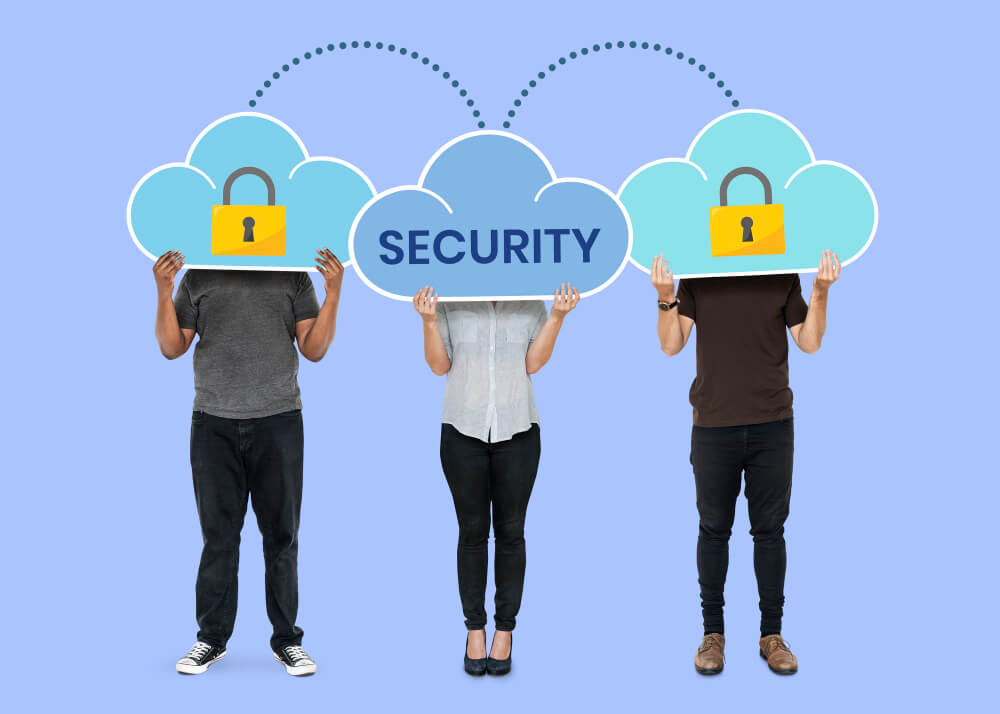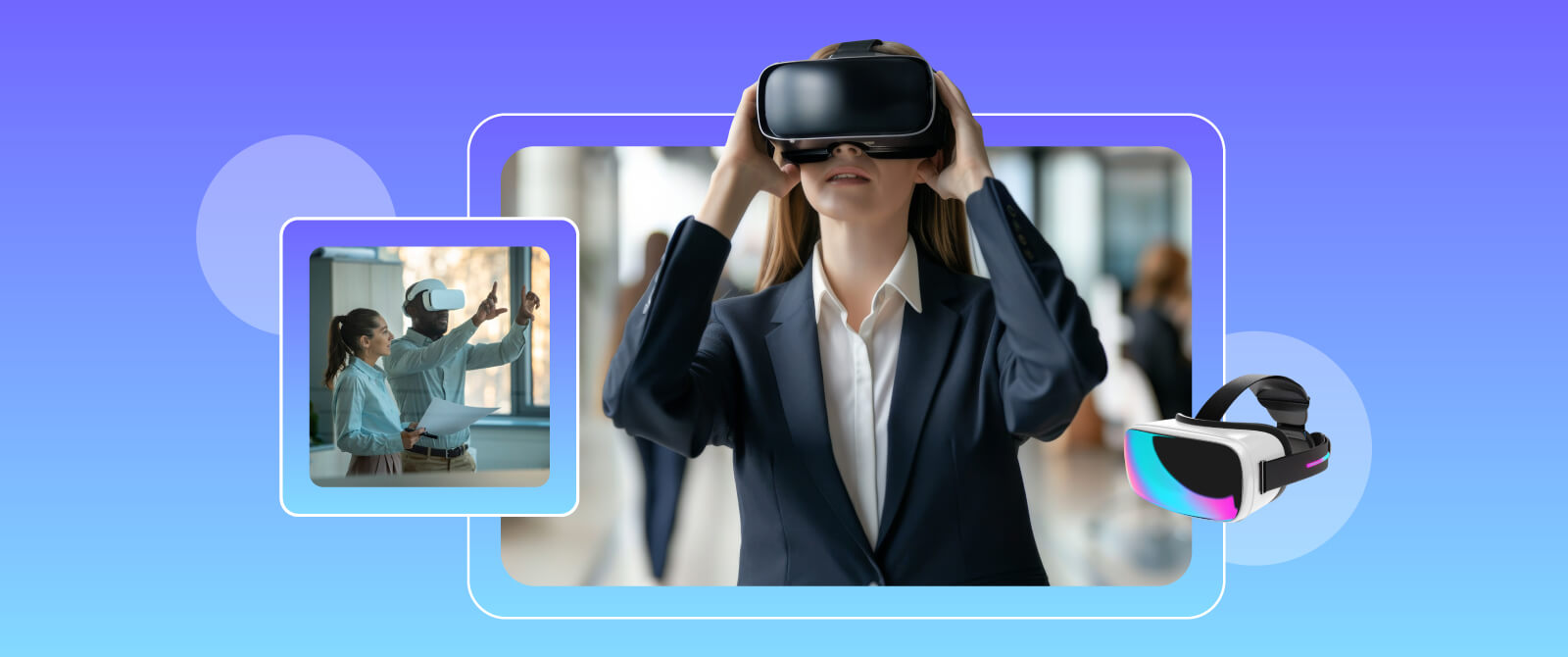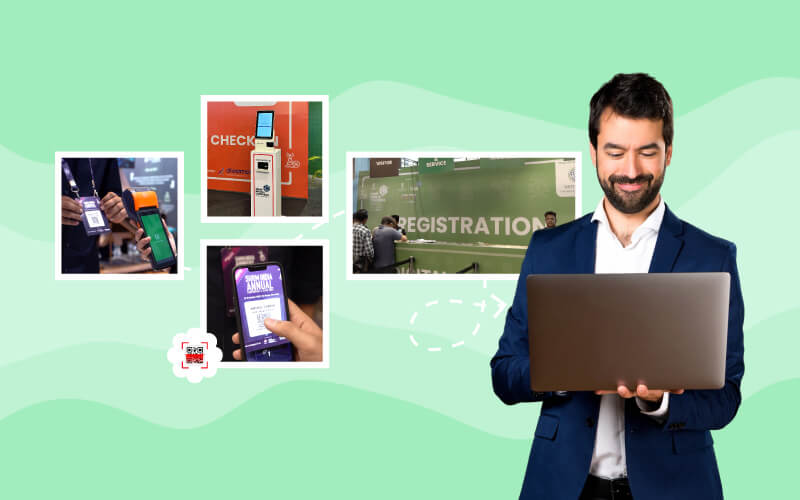Two transformative technologies, augmented reality(AR) and virtual reality(VR) are going beyond gaming and entertainment. These have become part of various industries, including event management. In the current era, AR/VR for event management is redefining the experience and interactions at events with new ways of getting engaged with the audience. Talking about augmented reality is known for overlaying digital information in the real world, transforming the perception of reality. On the other hand, virtual reality in events creates completely digital surroundings.
As the event industry continues to evolve, organizers can integrate AR/VR for attendee engagement as an innovative solution to capture attendees’ attention and drive engagement. In this comprehensive blog post, we are going to explore AR/VR for event management with their effect on attendee engagement, implementation, challenges along immersive future trends.
What Are Augmented Reality (AR) and Virtual Reality (VR)?
Augmented reality(AR) refers to a technology that enhances the real world by overlaying digital touch with the help of smart devices such as AR glasses or mobile phones. Augmented reality adds interactive and informative elements to the real world. In events, AR enhances experiences by offering interactive and informational graphics. These elements can be used to create virtual event maps, showcase product demonstrations, highlight key areas of interest, and more.
In contrast, Virtual reality(VR) refers to technology that replaces the entire field of view with immersive digital environments. Virtual reality can be experienced through VR headsets, which adapt and shift digital visuals based on your head and body movements. For instance, virtual reality in events allows attendees to experience the digital world with virtual event tours, virtual art galleries, interactive games, 3D movies, virtual product demos and more.
How Do AR/VR Work?
A seamless blend of physical and digital elements is what makes augmented reality possible. Augmented Reality (AR) uses transparent displays, cameras, sensors, markers or spatial mapping to overlay the digital images or information in the real world. Digital elements remain fixed, as you move around the real world. Augmented reality enhances the view of real objects or things instead of replacing it.
On the other hand, Virtual reality (VR) is known for providing the opportunity to experience complete immersion in digital worlds. However, virtual reality replaces real view with digital content with the use of inbuilt advanced graphics in VR headsets, spatial audio, and stereoscopic displays and lets you immerse yourself in the VR experience. When you move your body or head, the digital visuals will shift accordingly, it makes virtual experiences as meaningful as real ones.
Besides, both the technology needs to be equipped with sophisticated software and hardware to deliver seamless, interactive experiences that transform event management.
How AR/VR for Event Management Can Transform Your Event Experience?
Let’s discuss how these technologies can be transformative for organizers in their event management.

Immersive Environments
With augmented reality and virtual reality in events, organizers can design or create completely new and immersive environments for attendees. Virtual reality allows you to design virtual spaces that align with the event’s theme. For example, AR/VR for event management could transform a complete traditional product launch which allows attendees to interact with the product in a simulated environment.
Interactive Exhibits
AR/VR gamification is revolutionizing the way we used to interact and experience exhibits. However, by integrating gamified elements into AR and VR technology, organizers can make interactions more interesting and engaging. With AR and VR for event management, attendees can participate in interactive, entertaining challenges such as scavenger hunts, mystery games or virtual competitions. With this event gamification strategy, organizers can turn passive viewing into more active participation, leading to a more immersive and unforgettable experience.
Enhanced Networking Opportunities

AR/VR for event management also facilitates more meaningful networking opportunities. For example, virtual reality in events can create virtual networking lounges where attendees can interact as avatars, join discussions, or participate in virtual breakout sessions. This approach can overcome physical barriers and allow for more diverse and extensive virtual networking event possibilities, especially in hybrid or remote settings.
Innovative Presentations

Earlier traditional presentations were boring to attend but with AR/VR for event management, presentations have transformed too. With virtual reality in events, event organizers, and speakers can present in a 3D space, which allows participants to explore the content from different angles and interact with digital elements. As a result, it makes presentations more dynamic and memorable.

How Can AR/VR For Enhance Attendee Engagement During Events?
Let’s know more about how AR/VR impacts and enhances attendee engagement during events.
Event Interactive Gamification
AR/VR gamification adds another layer of excitement and fun to events. Organizers can incorporate AR-based games or VR challenges for attendees so that they can actively participate in the event. For instance, an AR-VR escape room, trivia games or AR scavenger hunt can lead participants to explore the hidden clues in the event’s venue and complete a few tasks. As a result, this kind of event engagement idea not only adds fun and entertainment but also keeps attendees captivated and involved.
Personalized Experiences
Attendees get benefits from AR/VR as it enables tailored interactions. With AR, attendees can receive personalized information, customized schedules, recommendations, or offers based on their interests, enhancing their event experience and relevance. For instance, scanning a QR code at a booth might reveal special promotions or detailed product information that’s relevant to the user. Moreover, in the case of virtual reality, personalized virtual experiences such as custom tours or virtual sessions can make the event more relevant and engaging for each attendee.
Enhanced Networking
Virtual Reality in events can create new networking opportunities. By setting up virtual networking spaces, such as lounges or meeting rooms where attendees interact as avatars, virtual reality breaks down physical barriers. This allows for more meaningful connections and discussions which makes it easier for participants to network with peers, speakers, or potential business partners, regardless of their location.
Enhanced Learning and Workshops
Workshops and learning sessions become more dynamic with AR and VR. VR simulations can offer hands-on practice in a virtual setting, while AR can provide interactive elements during presentations. This immersive AR/VR for attendee engagement approach makes complex topics easier for attendees to understand and keeps all participants actively engaged.
Social Media Integration
The integration of AR and VR can enhance social media interaction. Attendees can share their experiences with VR environments or AR features on social media platforms, generating buzz and extending the event’s reach. This organic promotion helps attract a broader audience and increases event visibility.
Interactive Surveys and Feedback
AR/VR for attendee engagement also includes tools for collecting real-time feedback. Attendees can participate in interactive surveys or polls through AR mobile apps, providing immediate insights into their experiences and preferences. This feedback helps organizers make quick adjustments during the event and gather valuable data for improving future events.
What Are the Challenges of Implementing AR/VR for Event Management?
Let’s discuss the top challenges while implementing AR/VR for event management:
High Initial Costs
The first challenge is integrating AR/VR gamification for event management as it involves significant investment in technology, including hardware, software development, and technical support. Managing these costs is essential for a successful implementation.
Space and Equipment Requirements
One of the limitations of implementing AR/VR for attendee engagement is that it requires additional physical space and equipment. Therefore, proper planning is required for these needs to ensure that the event flows smoothly without disruptions.
Hardware Issues
Current AR/VR devices often fall short in terms of field of view, resolution, and comfort. Event venues may lack the necessary infrastructure to support high-end hardware, and the cost of advanced graphics cards limits widespread use. Additionally, storage requirements and imprecise input methods can also affect the event experience.
Software Integration Difficulties
To incorporate AR/VR for attendee engagement at events, multiple inputs and sensors must be integrated into complex software. Since there are no standardized development frameworks, integrating existing event management systems, various device inputs, sensors, interfaces, platforms, and engines can be challenging. High data demands can disrupt real-time interactions and raise privacy concerns, while high data demands can lead to lags and bugs.
Read More: How to increase attendee engagement at events?
Attendee Comfort and Adoption
Getting attendees to use AR/VR gamification can be tricky, especially when it comes to their comfort. Issues like motion sickness, eye strain, and anxiety can occur, particularly with cheaper or lower-quality devices. That’s how privacy and health concerns also affect how appealing these technologies are. Therefore, in order to be effective, AR/VR solutions must be user-friendly, comfortable and practical enough to offer clear benefits beyond novelty.
Privacy and Data Security

AR and VR technologies face major privacy and security issues because they collect a lot of data and use various sensors. These concerns include potential spying, hacking, and misuse of personal information, as well as issues with data control. Without strong regulations, there’s a risk that companies might misuse data for profit. Additionally, these technologies can influence users’ thoughts and behaviors. It’s essential to handle data responsibly and protect users to prevent misuse and keep the trust intact.
User Interaction Variability
Understanding how attendees interact with AR/VR technology is complex. Factors like immersion, engagement, and interaction preferences affect the effectiveness of AR/VR gamification at events. Tailoring experiences to diverse user behaviors requires careful planning and testing.
Developing Realism and Immersion
Creating truly realistic and immersive virtual environments is challenging. Achieving photorealism requires high-quality graphics, lighting, and detailed physics, but current hardware and software often fall short. This involves extensive data, processing power, and storage to avoid issues like lag or bugs. However, realistic visuals alone don’t guarantee immersion; how believable and comfortable the virtual space feels is crucial. The technology must replicate not just appearance but also the physical and social dynamics of real-world environments.
What Future Trends Are Emerging in AR/VR for Event Management?
The future of AR/VR for event management looks bright. We’ll soon see advanced technology upgradation with AR glasses and VR headsets with better resolution, wider views, and improved touch sensations. These will make virtual events feel even more real and engaging. In addition to this, the integration of artificial intelligence(AI) and data analytics will also allow events to be more personalized in real time, aligning with what attendees want.
Moreover, with 5G technology becoming more common, augmented reality and virtual reality in events will become more reliable and accessible. Hybrid events, which mix physical and virtual elements, will also become more popular while creating richer experiences for attendees.
Furthermore, these technologies will become more affordable and inclusive, reaching more people, including those with disabilities. As we advance, it’s important to develop these technologies ethically, ensuring they enhance our lives without compromising privacy or well-being.
Conclusion
By the end of this blog post, we’ve discovered that augmented reality and virtual reality are reshaping event management by introducing innovative ways to engage attendees and elevate event experiences. Event organizers can easily create immersive environments using these technologies to offer interactive content. Not only will this enhance attendee engagement but it’ll also drive higher attendance. However, understand the challenges while implementing AR/VR and also keep updated about the emerging trends to effectively utilize AR/VR to create unforgettable events.








